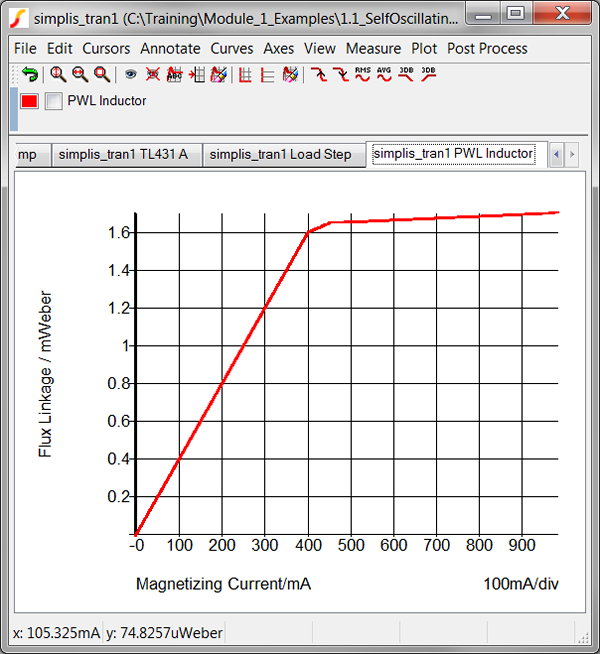Advanced SIMPLIS Training
|
In this Topic Hide
How SIMPLIS analyzes circuits exclusively in the time domain.
In this exercise, you will simulate a self-oscillating flyback converter in the each of the three SIMPLIS analyses, Periodic Operating Point, AC analysis and Transient Analysis.
Open the schematic titled 1.1_SelfOscillatingConverter_POP_AC_Tran.sxsch.
Press F9 or use the
schematic menu SimulatorRun.
Result: The SIMPLIS simulator simulates
the same time-domain nonlinear schematic in each of the three analysis
modes, Periodic Operating Point (POP), AC, and Transient. The SIMPLIS
Status window opens when the simulation is first launched, and the
graph viewer displays the simulation results. The results from the
POP analysis are not displayed, as the transient analysis was specified.
Transient results over-write the POP results for all simulations where
both POP and Transient are specified. The simulation results displayed
in the graph viewer can include waveforms plotted versus time as well
as time-domain waveforms that are plotted against each other using
X-Y plots, where time in an implicit variable.

SIMPLIS runs these three analyses in the following order (you will see later in the module that this order is fixed for good reasons):
Each of these analyses are executed in the time domain, exactly like what happens on the lab bench. The Periodic Operating Point analysis is discussed in detail in section 1.0.5 POP analysis, for now think of the Periodic Operating Point analysis as a way to accelerate the process of getting to steady state. A key point to remember is that without the Periodic Operating Point, you cannot run an AC analysis on the circuit.
After running the simulation, the graph viewer contains a number of graphs. The first, or left-most tab will have the gain and phase of the converter control loop taken from the AC Analysis. The other tabs will have the results of the transient analysis.
The AC analysis is carried out on the time domain model by first finding the Periodic Operating Point, then injecting a single time-domain sinusoidal perturbation signal into the circuit. The AC results are then calculated from the time domain response of the perturbation signal, and the next frequency to be analyzed is injected and the measurement process repeats. No averaged model is used. The time domain POP waveforms and the frequency-domain loop response of the Self-Oscillating Converter are shown below. You can click on each image to view an enlarged image.
| Time Domain Waveforms | Frequency Response of Time Domain Model |
|
|
|
|
The transient analysis is similar to a transient analysis in other simulators, except it typically runs much faster.
SIMPLIS operates just like your circuit in the laboratory - in the time domain.
© 2015 simplistechnologies.com | All Rights Reserved